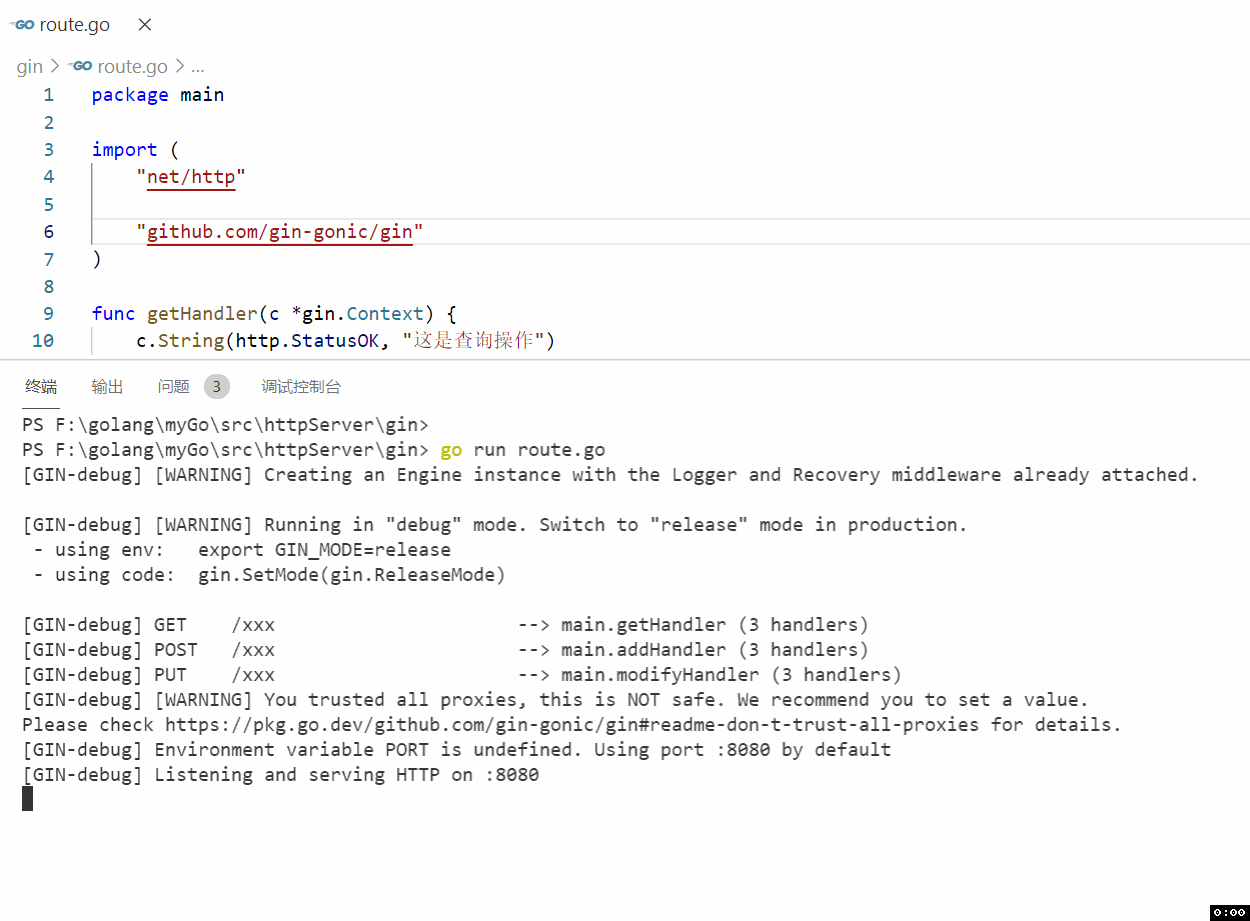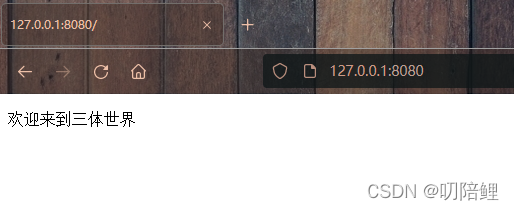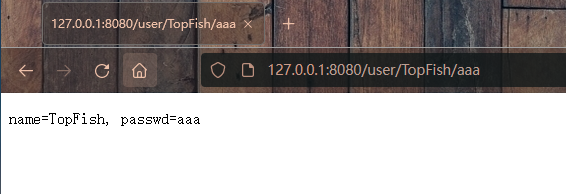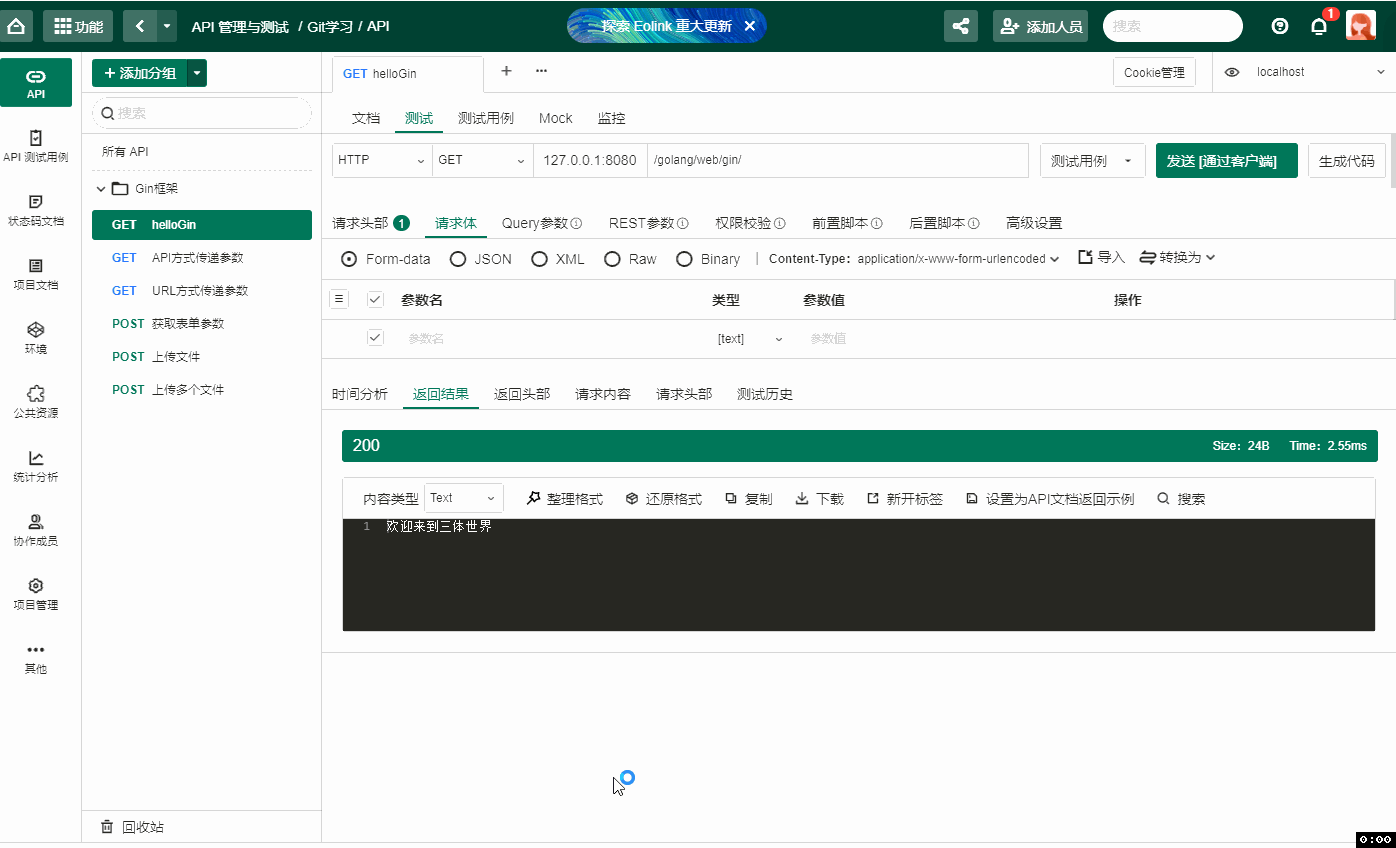本文主要是介绍Gin框架入门之Rest操作、Query操作、提交表单、上传单个文件、上传多个文件用法,希望对大家解决编程问题提供一定的参考价值,需要的开发者们随着小编来一起学习吧!

文章目录
- @[toc]
- 1. 基本路由操作
- 2. Restful风格的API
- 2.1 API参数
- 2.2 URL参数
- 2.5 表单数据
- 2.6上传单个文件
- 2.7上传多个文件
- 2.8 Route Group
文章目录
- @[toc]
- 1. 基本路由操作
- 2. Restful风格的API
- 2.1 API参数
- 2.2 URL参数
- 2.5 表单数据
- 2.6上传单个文件
- 2.7上传多个文件
- 2.8 Route Group
1. 基本路由操作
- gin框架采用的路由库是基于httprouter做的
- httprouter链接:https://github.com/julienschmidt/httprouter
gin的基本路由框架如下:
package mainimport ("net/http""github.com/gin-gonic/gin"
)func getHandler(c *gin.Context) {c.String(http.StatusOK, "这是查询操作")
}
func addHandler(c *gin.Context) {c.String(http.StatusOK, "这是ADD操作")
}
func modifyHandler(c *gin.Context) {c.String(http.StatusOK, "这是PUT操作")
}
func main() {r := gin.Default()r.GET("/xxx", getHandler)r.POST("/xxx", addHandler)r.PUT("/xxx", modifyHandler)r.Run()
}
编译运行:go run main.go
为了方便测试,这里使用Postman软件进行测试验证。

2. Restful风格的API
- gin支持Restful风格的API
- 即Representational State Transfer的缩写。直接翻译的意思是"表现层状态转化",是一种互联网应用程序的API设计理念:URL定位资源,用HTTP描述操作
| 序号 | 操作 | url |
|---|---|---|
| 1 | 获取文章/blog/getXxx | Get blog/Xxx |
| 2 | 添加/blog/addXxx | POST blog/Xxx |
| 3 | 修改/blog/updateXxx | PUT blog/Xxx |
| 4 | 删除/blog/delXxx | DELETE blog/Xxx |
2.1 API参数
在REST-API中传递参数的方式有多种:
- 通过定义的API传递参数
- 通过Query操作传递URL参数
- 在Header中传递参数
- 在Body中传递参数
后面两个比较常见。这里主要是前两个:API参数和URL参数
API参数说的是:在定义API时,通过占位符的方式给可能需要传递的参数预留位置。在Gin框架中可以通过Context的Param方法来获取这部分参数。
package mainimport ("fmt""net/http""strings""github.com/gin-gonic/gin"
)func main() {r := gin.Default()r.GET("/user/:name/*passwd", func(c *gin.Context) {name := c.Param("name")passwd := c.Param("passwd")//此时passwd="/xxxxx", 需要截断passwd(去除/)passwd = strings.Trim(passwd, "/")fmt.Printf("name=%s, passwd=%s\n", name, passwd)c.String(http.StatusOK, fmt.Sprintf("name=%s, passwd=%s\n", name, passwd))})r.Run(":8080")
}
编译运行:go run main.go
在浏览器中输入相应的API,结果如下:

已经从API中成功获取到了用户名和密码信息。
2.2 URL参数
URL参数一般是通过HTTP的Query方法来传递的。例如:https://cn.bing.com/search?q=aaa
其中:?q=aaa 便是Query的查询条件,也就是我们说的URL参数。不过URL参数不包括那个’?’
- Gin框架中,URL参数可以通过DefaultQuery()或Query()方法获取
- DefaultQuery()若参数不到则,返回默认值,Query()若不存在,返回空串
- API ? name=zs
package mainimport ("fmt""net/http""github.com/gin-gonic/gin"
)func main() {r := gin.Default()r.GET("/user", func(c *gin.Context) {name, _ := c.GetQuery("name")passwd, _ := c.GetQuery("passwd")fmt.Printf("name=%s, passwd=%s\n", name, passwd)c.String(http.StatusOK, fmt.Sprintf("name=%s, passwd=%s\n", name, passwd))})r.Run(":8080")
}
编译运行:go run main.go
在浏览器查看结果如下:

2.5 表单数据
http常见的传输格式有四种:
- application/json
- application/x-www-form-urlencoded
- application/xml
- mutipart/form-data
客户端向服务端提交数据时,通常采用表单的方式进行传输。例如提交用户名、密码、评论信息大多数都是采用表单的方式提交。这里简答介绍下gin中对表单数据的处理。
在Gin框架中,使用PostForm()方法获取表单参数,该方法默认解析的是:x-www-form-urlencoded或者form-data数据。DefaultPostForm()如果没有获取到指定的参数,则会填充默认字段。
demo如下:
package mainimport ("fmt""net/http""github.com/gin-gonic/gin"
)func handler(c *gin.Context) {user := c.PostForm("user")passwd := c.PostForm("passwd")types := c.DefaultPostForm("phone", "13031000000")c.String(http.StatusOK, fmt.Sprintf("用户名:%s, 密码:%s,联系方式:%s", user, passwd, types))
}func main() {r := gin.Default()r.POST("/golang/web/gin/form-data", handler)r.Run()
}
上次用的Postman进行测试,但是我用的比较少,不太习惯;如果自己再写一个提交表单的web页面,也着实有点难为人。最近一直在使用Eolinker进行项目管理,因此使用eolinker对该接口进行测试,个人感觉eolinker特别好用,强烈推荐一波。

2.6上传单个文件
http使用mutipart/form-data格式进行文件传输。
Gin文件上传与原生的net/http方法类似,不同点在于gin把原生的request封装到c.Rquest中·
package mainimport ("net/http""github.com/gin-gonic/gin"
)func upload(c *gin.Context) {file, err := c.FormFile("file")if err != nil {c.String(http.StatusNotImplemented, "上传文件失败")return}c.SaveUploadedFile(file, file.Filename)c.String(http.StatusOK, "接收文件成功:", file.Filename)
}func main() {r := gin.Default()r.MaxMultipartMemory = 8 << 20 //8Mr.POST("/golang/web/gin/upload", upload)r.Run()
}
测试效果:

2.7上传多个文件
接收多个文件,在代码处理上有些微不同,不过在Eolinker上的测试不用修改,直接导入多个文件即可。
package mainimport ("fmt""net/http""github.com/gin-gonic/gin"
)func uploadFiles(c *gin.Context) {form, err := c.MultipartForm()if err != nil {c.String(http.StatusNotImplemented, "上传文件失败")return}fmt.Printf("%+v\n", form)files := form.File["file"]//需要与eolinker上的参数名保持一致for _, file := range files {if err = c.SaveUploadedFile(file, file.Filename); err != nil {c.String(http.StatusNotImplemented, "上传文件失败")return}c.String(http.StatusOK, "接收文件成功:", file.Filename)}}func main() {r := gin.Default()r.MaxMultipartMemory = 8 << 20 //8Mr.POST("/golang/web/gin/upload", uploadFiles)r.Run()
}测试效果如下:

2.8 Route Group
route group主要是为了管理一些具有相同前缀的URL.
将上面提到的几种常见用法注册到一个group中,然后进行测试。
package mainimport ("fmt""net/http""strings""github.com/gin-gonic/gin"
)func helloGin(c *gin.Context) {fmt.Println("hello Gin")c.String(http.StatusOK, "欢迎来到三体世界")
}//使用Query进行参数传递
func urlParam(c *gin.Context) {name, _ := c.GetQuery("name")passwd, _ := c.GetQuery("passwd")fmt.Printf("name=%s, passwd=%s\n", name, passwd)c.String(http.StatusOK, fmt.Sprintf("name=%s, passwd=%s\n", name, passwd))
}//使用rest方式进行参数传递
func apiParam(c *gin.Context) {name := c.Param("name")passwd := c.Param("passwd")//此时passwd="/xxxxx", 需要截断passwd(去除/)passwd = strings.Trim(passwd, "/")fmt.Printf("name=%s, passwd=%s\n", name, passwd)c.String(http.StatusOK, fmt.Sprintf("name=%s, passwd=%s\n", name, passwd))}//提交表单
func postForm(c *gin.Context) {user := c.PostForm("user")passwd := c.PostForm("passwd")types := c.DefaultPostForm("phone", "13031000000")c.String(http.StatusOK, fmt.Sprintf("用户名:%s, 密码:%s,联系方式:%s", user, passwd, types))
}func uploadFile(c *gin.Context) {file, err := c.FormFile("file")if err != nil {c.String(http.StatusNotImplemented, "上传文件失败")return}c.SaveUploadedFile(file, file.Filename)c.String(http.StatusOK, "接收文件成功:", file.Filename)
}func uploadFiles(c *gin.Context) {form, err := c.MultipartForm()if err != nil {c.String(http.StatusNotImplemented, "上传文件失败")return}fmt.Printf("%+v\n", form)files := form.File["file"]for _, file := range files {if err = c.SaveUploadedFile(file, file.Filename); err != nil {c.String(http.StatusNotImplemented, "上传文件失败")return}c.String(http.StatusOK, "接收文件成功:", file.Filename)}}
func GinMain(r *gin.RouterGroup) {ginGroup := r.Group("/gin") //gin框架前缀{ginGroup.GET("/", helloGin)ginGroup.GET("/url-param", urlParam)ginGroup.GET("/api-param/:name/:passwd", apiParam)ginGroup.POST("/form-data", postForm)ginGroup.POST("/upload/file", uploadFile)ginGroup.POST("/upload/files", uploadFiles)}
}func main() {r := gin.Default()web := r.Group("/golang/web") //公共前缀GinMain(web)//最后注册的api是将其拼接起来r.Run(":8080")
}
测试效果如下

这篇关于Gin框架入门之Rest操作、Query操作、提交表单、上传单个文件、上传多个文件用法的文章就介绍到这儿,希望我们推荐的文章对编程师们有所帮助!








